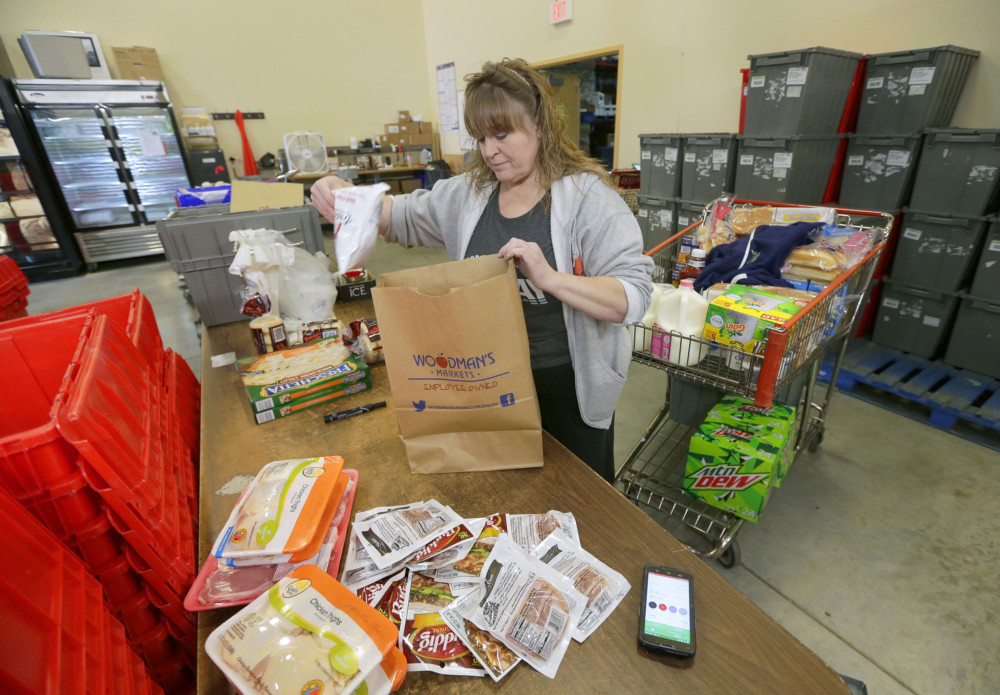By Joe Taschler and Sarah Hauer
Milwaukee Journal Sentinel
WWR Article Summary (tl;dr) Online grocery shopping has become the fastest-growing form of all retail by leaps and bounds, far surpassing electronics and all other components of the online space.
MILWAUKEE
Because of people like Sarah Fracek, and some who aren’t at all like her, a retail sector that once seemed nearly immune to the internet’s economic disruption has become an increasingly digital thing.
Fracek does almost all of her grocery shopping online.
“I hate going into a grocery store,” said Fracek, who doesn’t mind spending a few extra dollars to have someone else assemble her grocery order and either deliver it or have it ready for her to pick up.
“I’m working super late, and I really value the time that I have that’s ‘me’ time,” she said.
A tech-savvy, time-starved population, led by people like Fracek in the 18-35 age group, has catapulted digital grocery shopping into the fastest-growing segment in U.S. retail.
“This is no longer something to just keep an eye on,” said the Food Marketing Institute, a retail food trade group based in Arlington, Va. “It’s happening, and it’s habituating very large numbers of people very quickly to online-only providers and to the online channel for groceries.”
The organization has been surveying trends in the industry for 40 years. Its latest survey, released this month, describes growth the likes of which it doesn’t ever expect to see again: In 2017, 43 percent of millennials surveyed said they shop online for groceries at least occasionally, a 50 percent jump from 2016, with much of the growth coming among those who say they shop for groceries online “either fairly often or all the time.”
The phenomenon is not necessarily bad for conventional grocery stores, which are moving quickly and aggressively into the digital marketplace.
Milwaukee-based Sendik’s Food Markets introduced online grocery service in the fall of 2015.
“Research will tell you it is the fastest-growing form of all retail by leaps and bounds, far surpassing electronics and all other components of the online space,” said Mark Birmingham, vice president of administration and development at the company.
“The rate of adoption over the last 12 to 18 months, I think it’s growing faster than anybody expected,” Birmingham said. “It is the fastest-growing part of our business.”
Grand Rapids, Mich.-based Meijer says its online food business has grown rapidly.
The company said it is on pace to make more than a million deliveries made from its stores by year-end.
Online service also can help smaller grocery operators grow.
“We look at it as a way of expanding our trade area without having to build more stores,” said Darlene Murphy, director of marketing for Metcalfe’s Market, which has three stores.
Food producers also are watching the situation closely.
Hamdi Ulukaya, CEO and founder of Chobani yogurt, sees it as a kind of throwback, especially for products like his company’s.
“I see the milkman coming back, I really do, for fresh food,” Ulukaya said. “You wake up and go to the door and there’s your milk and cheese. It’s coming back to what it was in the early days.”
Digital grocery shopping essentially has been a phenomenon waiting to happen, with the industry finally catching up to the demands of younger consumers, said Jim Hertel, senior vice president of Willard Bishop, a Chicago-area food retail and production consultancy that is part of Inmar Analytics.
“Millennials are just online all the time,” Hertel said. “Now that they are forming households, it’s less about their adopting online and it’s more that they are shopping for food and doing it the way they would normally do anything, which is online.”
Fracek started using the online grocery service Peapod six years ago and places an order nearly every Sunday.
“If someone can pick out the things that I want, it’s a waste of time for me to go,” she said. “I would rather be doing something I enjoy.
“I still run into the store, but usually it’s when I haven’t planned ahead. I’ll run in to get stuff for one meal _ odds and ends.”
Buying groceries online has proven to be a blessing “for someone working crazy hours and doesn’t want to go to the grocery store when you’re getting done with work at 8 p.m.,” Fracek said.
For grocers, online or in person, the quality has to be the same, FMI’s survey says.
“Shoppers most often cite high-quality fruits and vegetables and high-quality meat among the attributes considered important when selecting a primary store,” the survey says. “Low prices come in right after that.”
Consumers also want to know where their food comes from and how it was produced.
“Millennial shoppers especially want to support companies that share their values and prioritize a broader good,” according to the FMI survey.
––––
(James B. Nelson contributed to this report.)














































































































































































































































































































































































